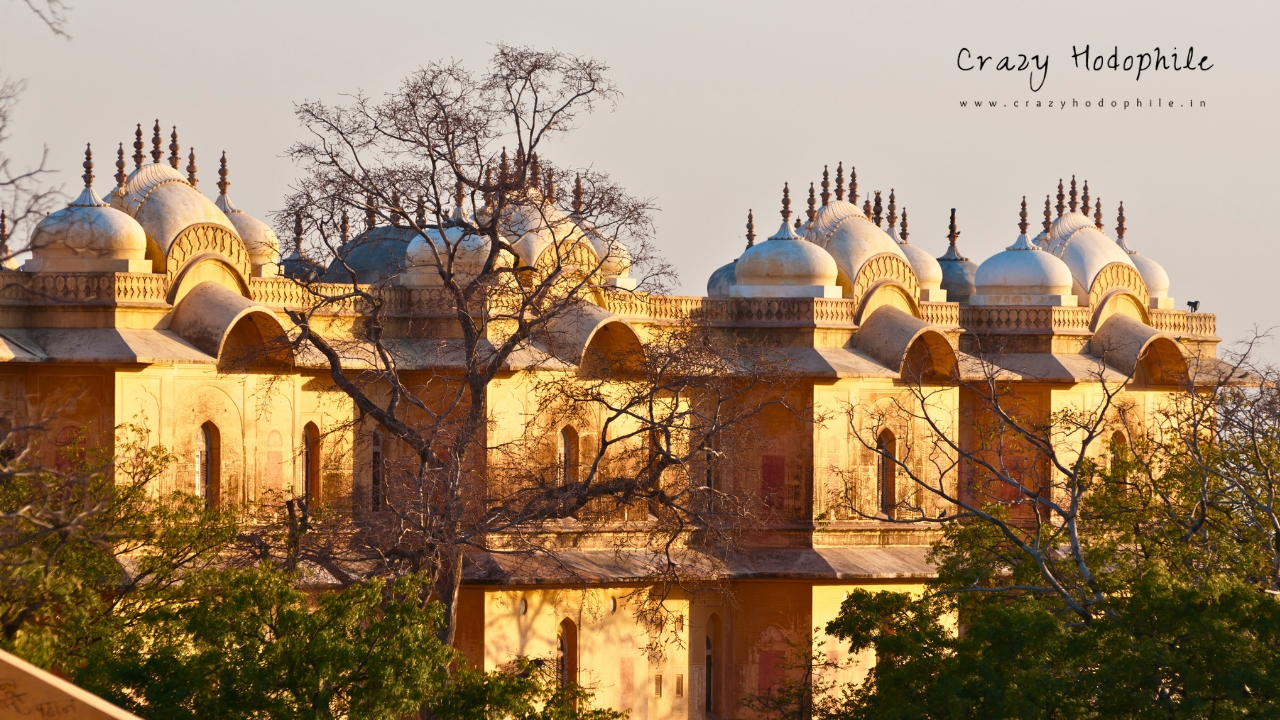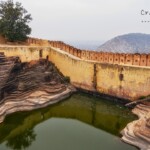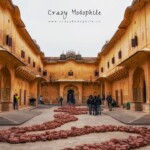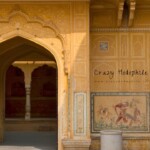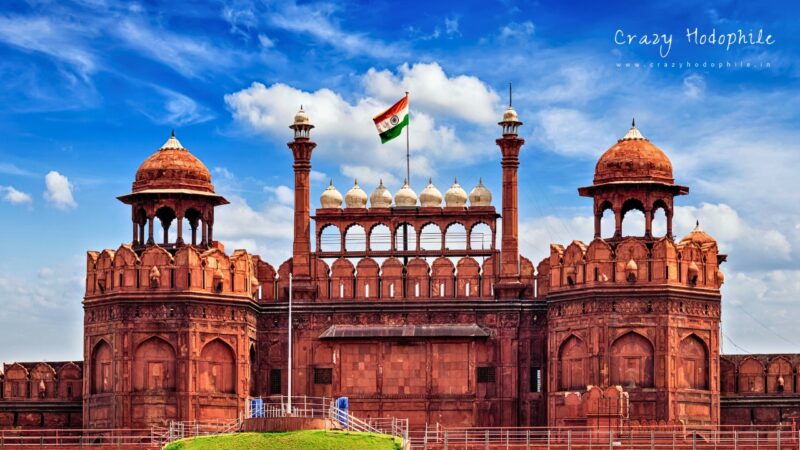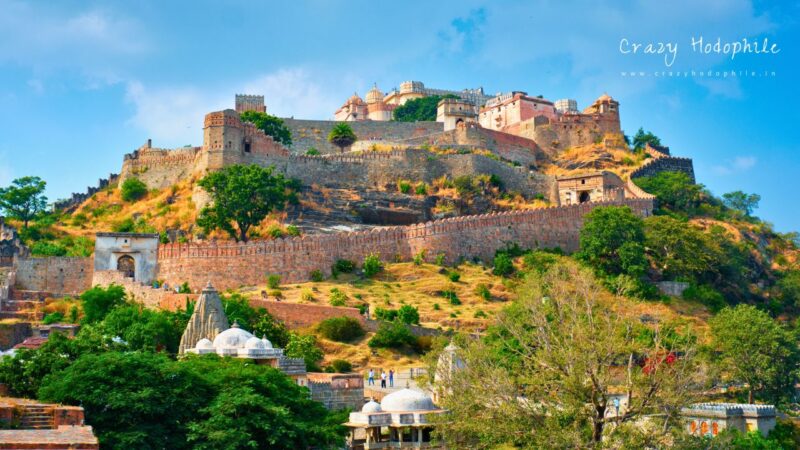Explore Nahargarh Fort Jaipur: History, Ticket Info, Tips & More | Crazy Hodophile | 2025
Nahargarh Fort stands as a magnificent testament to Jaipur’s rich history, offering a stunning blend of architectural brilliance, scenic beauty, and royal legacy. Perched atop the rugged Aravalli Hills, this iconic fort overlooks the Pink City, narrating tales of grandeur and royal leisure. A visit to Nahargarh Fort is not just an exploration of a historical site but an immersive experience that takes you back in time.
Table of Contents
Overview of Nahargarh Fort
Nahargarh, meaning “Abode of Tigers,” is a sprawling fort built in 1734 by Maharaja Sawai Jai Singh II, the founder of Jaipur. Initially constructed as a summer retreat, the fort later served as a defensive structure against potential invasions. Unlike other forts of Rajasthan that resonate with tales of fierce battles, Nahargarh’s story is one of serene elegance and royal leisure.
Delving into History
The construction of Nahargarh Fort was part of Maharaja Sawai Jai Singh II’s grand plan to protect Jaipur from northern invasions. The fort’s construction is shrouded in folklore. It is believed that the restless spirit of a local ruler, Nahar Singh Bhomia, obstructed its construction. To pacify him, a temple was built within the fort, and the site was renamed Nahargarh in his honor. Previously, it was called “Sudarshangarh.”
Over the years, the fort underwent significant expansions, particularly during the reigns of Sawai Ram Singh and Sawai Madho Singh. By the 19th century, it had become a favored retreat for the royal families, offering a tranquil escape from the bustling city below. Furthermore, the fort played a crucial role during the Sepoy Mutiny of 1857, providing refuge to Europeans residing in Jaipur, though it’s important to remember that the Maharajah remained loyal to the British, making this a strategic decision.
Gallery
Architecture and Design
Nahargarh Fort is a classic example of Rajput architecture infused with subtle European influences. Built with sturdy sandstone, the fort’s imposing walls stretch over several kilometers, merging seamlessly with the rocky terrain of the Aravalli range. Here are some of its architectural highlights:
- Madhavendra Bhawan: This palace complex within the fort was designed by Sawai Madho Singh as a residence for his queens. It features nine identical suites, each equipped with bedrooms, kitchens, and servant quarters, ensuring privacy and comfort.
- Diwan-E-Aam: The Hall of Public Audience was where the royals interacted with commoners and officials. Its design reflects the openness and grandeur of Rajput governance.
- Khajana Bhawan (Treasury): This building showcases the storage of royal wealth and offers insights into the economic history of the Rajput rulers.
- Nahargarh Stepwell: A geometric marvel with symmetrical steps leading to a water reservoir, it is a lesser-known yet fascinating feature of the fort.
- Temples: The fort houses several temples, including one dedicated to Nahar Singh Bhomia, built to honor the spirit believed to protect the fort.
- Sainik Vishramgrih (Soldiers’ Restroom): Designed as a resting place for soldiers, this structure highlights the strategic importance of the fort and the care provided for its defenders.
Interesting Facts
- Secret Passages: The fort is believed to have hidden passages that allowed the royal family to escape in the event of an attack.
- Water Harvesting System: Nahargarh featured an advanced water harvesting system, with stepwells and tanks designed to collect rainwater.
- Refuge for Nawab Wazir Ali: During the reign of Maharaja Sawai Pratap Singh (1779-1803 AD), Nawab Wazir Ali of Awadh was sheltered at Nahargarh Fort as a refugee. Entry to the fort was highly restricted, with common people forbidden from entering. Even those of high status had to enter the fort blindfolded.
Things to See Inside
A visit to Nahargarh Fort is more than just a historical tour; it’s an immersive experience. Here’s what awaits you:
- The Sculpture Park at Madhavendra Bhawan: Explore contemporary art installations set within the historical setting of Madhavendra Bhawan, blending history and modern creativity.
- Stepwell of Nahargarh Fort: A uniquely designed stepwell that reflects traditional Rajasthani water architecture, perfect for photography enthusiasts.
- Sunset and Sunrise Points: Capture the magical sunrise and sunset from dedicated viewpoints, offering ethereal views of Jaipur.
- Rooftop Cafes: Enjoy snacks and beverages at rooftop cafés with stunning views of the city below.
- Sheesh Mahal: Admire intricate glasswork and mirror designs.
- Jaipur Wax Museum: Discover realistic wax sculptures of notable figures such as A.P.J. Abdul Kalam, Kalpana Chawla, Mother Teresa, Albert Einstein, and Amitabh Bachchan.
- Temples: Visit the temples dedicated to various deities, including one honoring Nahar Singh Bhomia.
Visiting Information
Opening Hours
It is open daily from 10:00 AM to 5:30 PM
Ticket Prices
- Indian Adults: ₹50; Students: ₹20
- Foreign Adults: ₹200; Students: ₹100
- Children Below 7 Years: Free entry
- Free Entry Days: Enjoy free entry to the fort on special occasions like Rajasthan Day (March 30th), World Heritage Day (April 18th), World Museum Day (May 18th), and World Tourism Day (September 27th).
- Combined Ticket (Sheesh Mahal, Wax Museum, Royal Darbar): ₹500 per person
Note: Ticket prices are subject to change over time, so it’s always a good idea to confirm the latest fees when booking. Both individual and composite tickets are available on the Rajasthan Tourism website. (Rajasthan Tourism – Nahargarh Fort)
Food Options
- RTDC Durg Cafeteria Padao: Rooftop restaurant within the fort offering snacks, beverages, and meals with stunning views.
- Once Upon a Time: Restaurant near Madhvendra Palace serving delicious Rajasthani cuisine with scenic views.
Notes: Consider bringing your own snacks, as food options outside the fort are limited and not very worthwhile.
Tips for Your Visit
- Best Time to Visit: October to March offers pleasant weather, making it the perfect time to explore the fort.
- Wear Comfortable Shoes: With extensive walking through the fort, sturdy footwear is essential.
- Composite Ticket: Save time and money by purchasing a two-day composite ticket, which grants entry to multiple Jaipur attractions like Amber Fort, Albert Hall Museum, Jantar Mantar, Hawa Mahal, and more.
- Stay Hydrated: Staying hydrated is essential, especially during the warmer months. Don’t forget to bring a water bottle.
- Time Allocation: Plan for 2-3 hours to fully explore the fort and its stunning views.
- Sunset Views: Don’t miss the mesmerizing sunset views from the fort, which offer breathtaking photo opportunities.
- Guide Option: If a guide offers a fort tour for ₹200–₹300, it’s worth considering. Alternatively, use the blog’s detailed information to learn about the fort.
- Avoid Late Hours: The surrounding Nahargarh Biological Park is home to wild animals, so avoid staying after dark.
- Sheesh Mahal Insight: Many visitors feel the Sheesh Mahal doesn’t justify its ₹500 ticket, with limited space and no photography allowed. Guards also limit your time inside to 5-10 minutes.
How to Reach
Nahargarh Fort is located approximately 20 kilometers from Jaipur City Center. Here are the various ways to reach the fort:
By Road
- The fort is around 28 km from Jaipur International Airport and 17 km from Jaipur Railway Station.
- Visitors can hire a taxi, or auto-rickshaw, or opt for app-based cabs or bike rides. Private vehicles are also a convenient option.
By Metro
- Take the Pink Line metro to Chandpole Station, situated about 15.5 km from the fort. From there, you can continue your journey via taxi, auto-rickshaw, or app-based transport services.
By Bus
- Take a bus from Govind Marg to Narayan Singh Circle 7, and then switch to another bus heading to Choti Chopar 3A.
- Alternatively, you can board a bus from Transport Nagar to Ajmeri Gate 14 and then transfer to Choti Chopar 3A.
Location Map for Nahargarh Fort
Nearby Attractions
- Jaigarh Fort (Approx. 6 km): Renowned for housing the world’s largest cannon on wheels, Jaivana.
- Amer Fort (Approx. 10 km): A majestic palace complex renowned for its stunning architecture, intricate carvings, and rich history.
- Jal Mahal (Approx. 11 km): A picturesque palace situated in the middle of Man Sagar Lake, known for its serene beauty and architectural elegance.
- Hawa Mahal (Approx. 13 km): The iconic “Palace of Winds,” is celebrated for its unique facade and cultural significance.
- The City Palace (Approx. 14 km): The royal residence of Jaipur’s Maharajas, featuring beautiful courtyards, museums, and architectural grandeur.
- Jantar Mantar (13 km): A UNESCO World Heritage Site, this astronomical observatory showcases ingenious instruments used to study celestial movements.
Related External References:
- Detailed History of Nahargarh Fort
- Rajasthan govt plans ropeway to connect Amber, Jaigarh, and Nahargarh forts
- The fourth edition of The Sculpture Park
- How Jaipur’s ruler used gift diplomacy to portray his state as an equal to England
Conclusion
Nahargarh Fort is more than just a historical monument; it’s a gateway to Rajasthan’s regal past and architectural splendor. Whether you’re a history buff, a nature enthusiast, or a casual traveler, Nahargarh offers something unique for everyone. From its majestic architecture to the stunning views of Jaipur, the fort captivates the hearts of all who visit.

